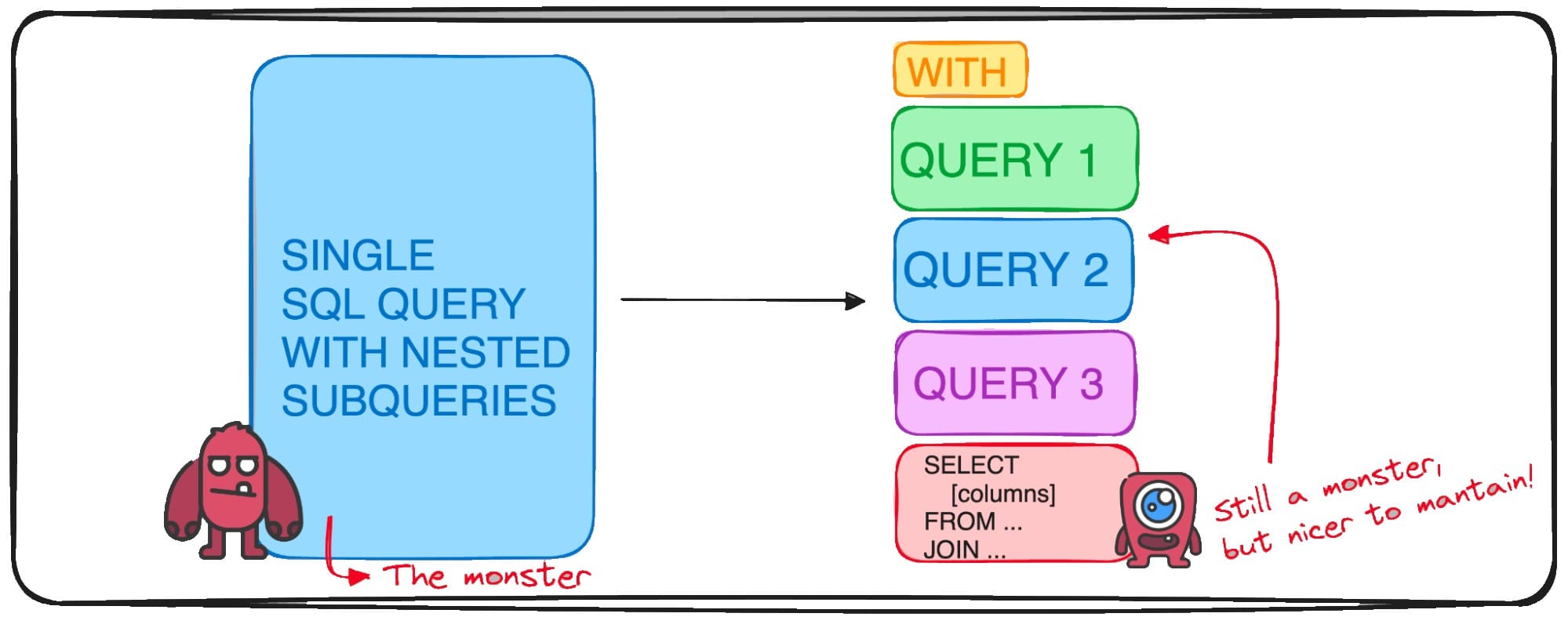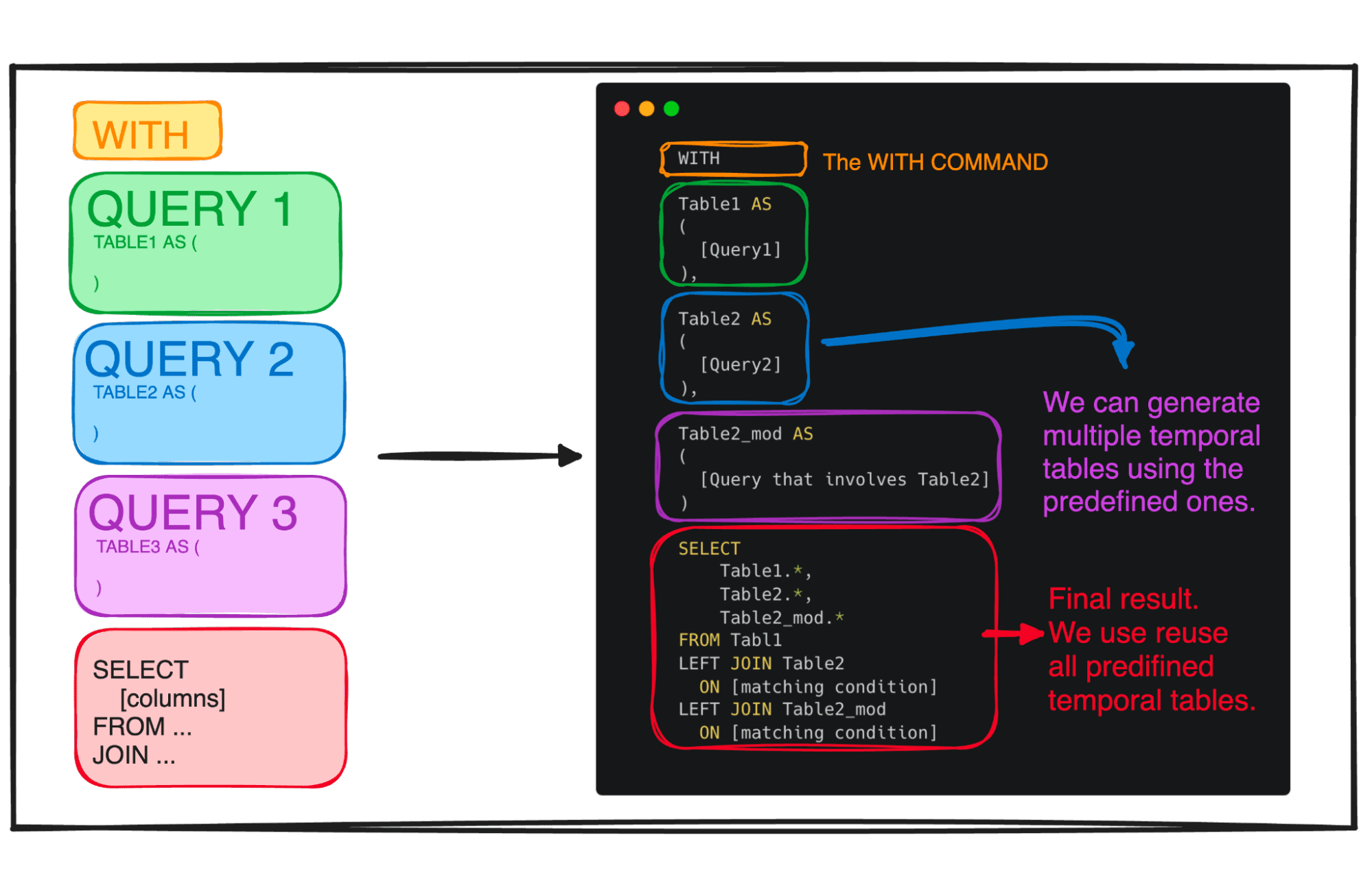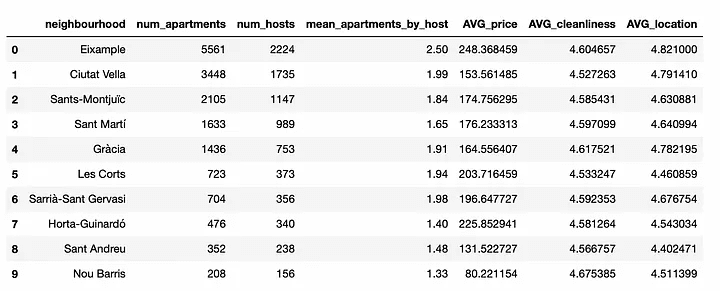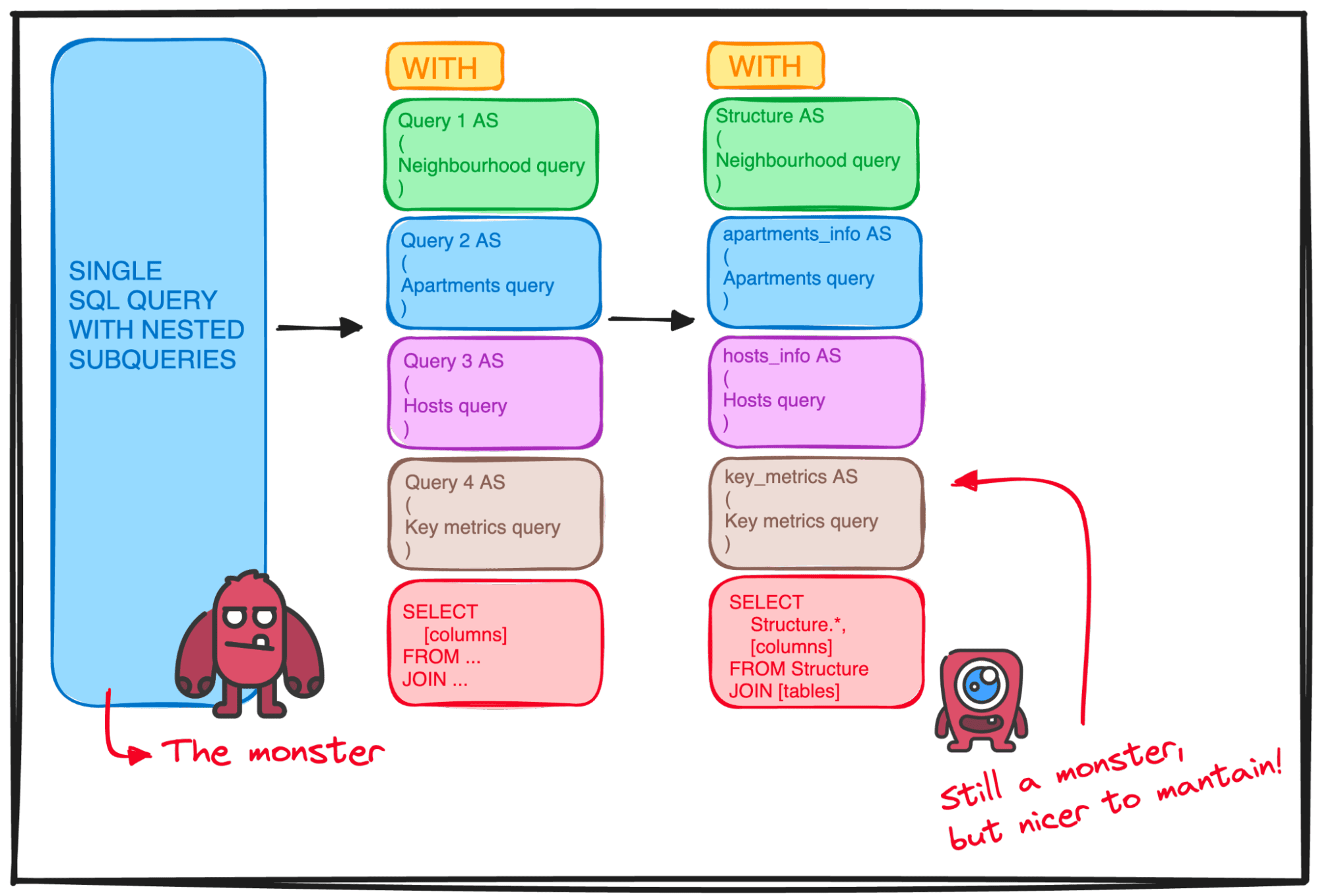
Picture by Writer
On the planet of knowledge, SQL nonetheless stands because the lingua franca for interacting with databases.
Nonetheless as we speak it stands as one of the crucial used languages to take care of information and continues to be thought of a must have for any good information skilled.
Nonetheless, anybody who has labored with advanced SQL queries is aware of they’ll rapidly flip into unwieldy beasts—troublesome to learn, preserve, or reuse.
This is the reason as we speak it’s not sufficient to know SQL, we should be good at crafting queries. And that is truly a kind of artwork.
That is the place Widespread Desk Expressions (CTEs) come into play, reworking the artwork of question writing right into a extra structured and approachable craft.
So let’s uncover collectively methods to code readable and reusable queries.
If you’re questioning what’s a CTE, you’re in the suitable article.
A Widespread Desk Expression (CTE) is a brief end result set that’s outlined inside the execution scope of a single SQL assertion.
They’re temporal tables that may be referenced many instances inside a single question and usually are used to simplify advanced joins and subqueries, with the last word aim of accelerating the readability and group of SQL code.
So they’re highly effective instrument for breaking down advanced queries into easier components.
Right here’s why it is best to think about using CTEs:
- Modularity: You may break down advanced logic into readable chunks.
- Readability: It makes understanding the move of SQL queries simpler.
- Reusability: CTEs will be referenced a number of instances in a single question, avoiding repetition.
The magic begins with the WITH clause, which precedes your important question and defines totally different temporal tables (CTEs) with aliases.
Due to this fact, we at all times want to start out our question with the “WITH” command to start out defining out personal CTEs. Through the use of CTEs, we will break any advanced SQL question into:
– Small temporal tables that compute associated variables.
– A closing desk that solely takes these variables that we wish as our output.
And that is exactly the MODULAR strategy we wish in any code!


Picture by Writer
So utilizing CTEs in our queries permits us to:
– Execute a temporal desk ONCE and reference it MULTIPLE instances.
– Enhance readability and simplify advanced logic.
– Promote code reusability and modular design.
In an effort to perceive this higher, we will take a sensible instance of Airbnb listings in Barcelona.
Think about we wish to analyze the efficiency of listings by neighborhood and evaluate it with town’s general efficiency. You’d want to tug collectively details about neighborhoods, particular person flats, hosts, and pricing.
To exemplify this, we’ll use the InsideAirbnb desk of Barcelona, which appears like follows:


A naive strategy may lead you to create nested subqueries that rapidly turn into a upkeep nightmare just like the one as follows:
Code by Writer
As a substitute, we will make the most of CTEs to compartmentalize our question into logical sections—every defining a chunk of the puzzle.
- Neighborhood Knowledge: Create a CTE to summarize information by neighborhood.
- House and Host Data: Outline CTEs for particulars about flats and hosts.
- Metropolis-wide Metrics: One other CTE to collect city-level statistics for comparability.
- Closing Meeting: Mix the CTEs in a closing SELECT assertion to current the information cohesively.


Picture by Writer
And we’d find yourself with the next question:
Code by Writer
Through the use of CTEs, we flip a probably monstrous single question into an organized set of knowledge modules. This modular strategy makes the SQL code extra intuitive and adaptable to modifications.
If new necessities emerge, you’ll be able to modify or add CTEs with out overhauling your complete question.
When you’ve established your CTEs, you’ll be able to reuse them to carry out comparative evaluation. As an example, if you wish to evaluate neighborhood information towards city-wide metrics, you’ll be able to reference your CTEs in a sequence of JOIN operations.
This not solely saves time but in addition retains your code environment friendly, as you received’t must repeat the identical question twice!
CTEs are a testomony to the precept that a little bit construction goes a great distance in programming. By adopting CTEs, you’ll be able to write clearer, extra maintainable, and reusable SQL queries.
It streamlines the question growth course of and makes it simpler to speak advanced information retrieval logic to others.
Keep in mind, the subsequent time you end up about to embark on writing a multi-join, nested subquery monster, contemplate breaking it down with CTEs.
Your future self—and anybody else who may learn your code—will thanks.
Josep Ferrer is an analytics engineer from Barcelona. He graduated in physics engineering and is at the moment working within the Knowledge Science subject utilized to human mobility. He’s a part-time content material creator centered on information science and expertise. You may contact him on LinkedIn, Twitter or Medium.

